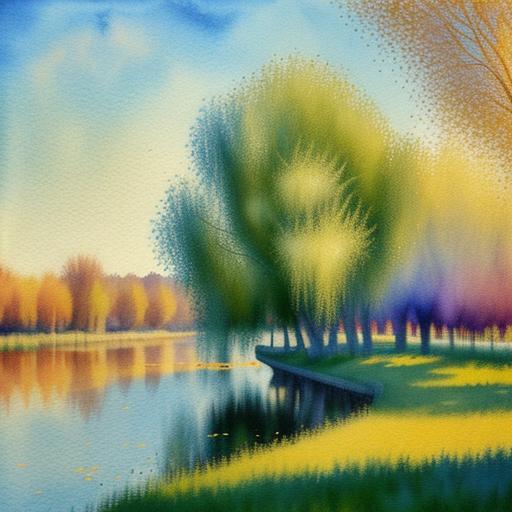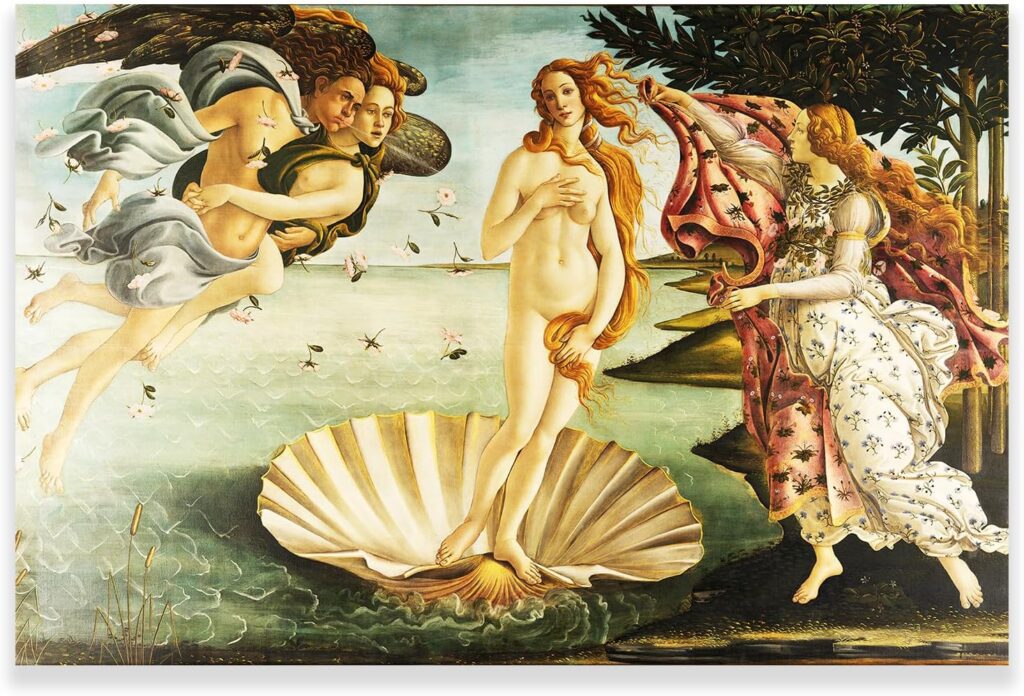Ever wondered how art has changed over the centuries? How did we go from lifelike portraits to abstract splashes of color? Art movements have shaped our cultural landscape, reflecting the hopes, fears, and dreams of each era. But what exactly are these movements, and why should we care?
Let’s dive into the fascinating world of art movements, tracing their evolution from the Renaissance to Postmodernism. We’ll explore how these artistic revolutions have not only changed the way we see art but also how we understand ourselves and our world.
Renaissance: The Rebirth of Classical Beauty
The Renaissance kicked off in 14th century Italy, marking a seismic shift in European art. But what drove this change?
Artists like Leonardo da Vinci, Michelangelo, and Raphael led the charge, breathing new life into classical techniques. They mastered perspective, giving their works a depth and realism never seen before. The Mona Lisa’s enigmatic smile and the Sistine Chapel’s awe-inspiring frescoes are testament to their skill.
But the Renaissance wasn’t just about pretty pictures. It reflected a society emerging from the Dark Ages, rediscovering ancient knowledge and placing new value on human potential. Art became a tool for exploring the world, from anatomy to engineering.
Baroque: Drama and Emotion in Every Brushstroke
As the Renaissance faded, the Baroque era burst onto the scene in the late 16th century. Think of it as the Hollywood blockbuster of art movements – big, bold, and dramatic.
Caravaggio’s use of chiaroscuro (strong contrasts between light and dark) created intense, emotional scenes. Bernini’s sculptures seemed to come alive, frozen in moments of ecstasy or anguish. The Catholic Church, fighting back against the Protestant Reformation, used Baroque art as a powerful propaganda tool.
But it wasn’t all religious fervor. Rembrandt’s self-portraits show a raw, honest exploration of the human condition that still resonates today.
Rococo: Frivolity and Finesse
Tired of all that drama? The Rococo movement said, “Let’s lighten up a bit!” Emerging in early 18th century France, Rococo was the art world’s equivalent of a fancy dessert – light, frothy, and deliciously decadent.
Artists like Watteau and Fragonard created pastel-hued scenes of aristocratic pleasure. Think elaborate hairstyles, flowing fabrics, and playful cherubs. But beneath the surface frivolity, there was often a hint of melancholy or social commentary.
Rococo wasn’t limited to painting. It influenced everything from furniture design to architecture, giving us some of the most lavishly decorated interiors in history.
Romanticism: Emotion Takes Center Stage
As the Age of Reason gave way to the Industrial Revolution, artists began to push back against cold logic and mechanization. Enter Romanticism, the rebel of art movements.
Romantics like Turner and Friedrich celebrated nature’s raw power and beauty. Their stormy seascapes and misty mountains tapped into a sense of the sublime – beauty tinged with terror.
But Romanticism wasn’t just about pretty landscapes. Delacroix’s “Liberty Leading the People” captured the revolutionary spirit of the time, while Goya’s dark visions exposed the horrors of war.
Realism: Telling It Like It Is
By the mid-19th century, some artists had had enough of idealized beauty and heroic scenes. They wanted to show life as it really was, warts and all.
Courbet and Millet turned their attention to ordinary people – farmers, laborers, and the urban poor. Their unflinching depictions of hard work and poverty were sometimes seen as provocative or even revolutionary.
Realism wasn’t just about subject matter. It also meant a shift in technique, with artists striving for accurate, almost photographic representations of their subjects.
Impressionism: Capturing the Moment
Imagine trying to paint the world not as you know it is, but as you see it in a fleeting moment. That’s the essence of Impressionism, perhaps the most beloved of all art movements.
Monet, Renoir, and their fellow Impressionists used quick brushstrokes and vibrant colors to capture the play of light and atmosphere. They often painted outdoors (en plein air) to better observe nature’s ever-changing moods.
At first, critics scoffed at their “unfinished” looking works. But today, Impressionist paintings are among the most popular and valuable in the world.
Post-Impressionism: Beyond the Moment
As the 19th century drew to a close, a new generation of artists began to push the boundaries even further. Post-Impressionists like Van Gogh, Cézanne, and Gauguin took the lessons of Impressionism in wildly different directions.
Van Gogh’s swirling brushstrokes and intense colors expressed deep emotional states. Cézanne’s experiments with form and perspective laid the groundwork for Cubism. Gauguin’s flat planes of color and exotic subjects pointed towards Primitivism and Fauvism.
Each of these artists developed a unique, personal style that went beyond mere representation, paving the way for the abstract art of the 20th century.
Surrealism: Dreams and Nightmares on Canvas
What if you could paint your dreams? That’s essentially what the Surrealists set out to do in the 1920s and 30s.
Influenced by Freud’s theories of the unconscious, artists like Dalí, Magritte, and Ernst created bizarre, dreamlike images that challenged reality. Melting clocks, floating apples, and bird-headed women became icons of the movement.
But Surrealism wasn’t just about weird imagery. It was a philosophical and political movement that sought to liberate the mind from the constraints of rational thought.
Postmodernism: Breaking All the Rules
As we move into the latter half of the 20th century, art becomes increasingly hard to define. Postmodernism isn’t so much a single movement as a general attitude of “anything goes.”
Artists like Warhol blurred the lines between high art and popular culture. Conceptual artists like Duchamp challenged the very notion of what art could be. Performance artists used their bodies as living canvases.
Postmodern art often plays with ideas of appropriation, irony, and pastiche. It questions traditional notions of authorship, originality, and meaning.
The Ongoing Evolution of Art
From the precise perspective of Renaissance masters to the wild experimentation of Postmodernism, art movements have continually pushed the boundaries of creativity and expression. Each movement reflects the social, political, and technological changes of its time, offering us a unique window into history.
But the evolution of art isn’t over. Today’s artists continue to innovate, incorporating new technologies and responding to global challenges. By understanding the art movements of the past, we can better appreciate the art of the present and imagine the possibilities of the future.
So next time you visit a museum or gallery, take a moment to consider not just what you see, but the long chain of artistic revolutions that made it possible. And remember, today’s controversial new style might be tomorrow’s beloved classic!
Resources:
- The Metropolitan Museum of Art’s Heilbrunn Timeline of Art History: https://www.metmuseum.org/toah/
- Google Arts & Culture’s Art Movements Collection: https://artsandculture.google.com/project/art-movements
- Tate’s Art Terms Glossary: https://www.tate.org.uk/art/art-terms



